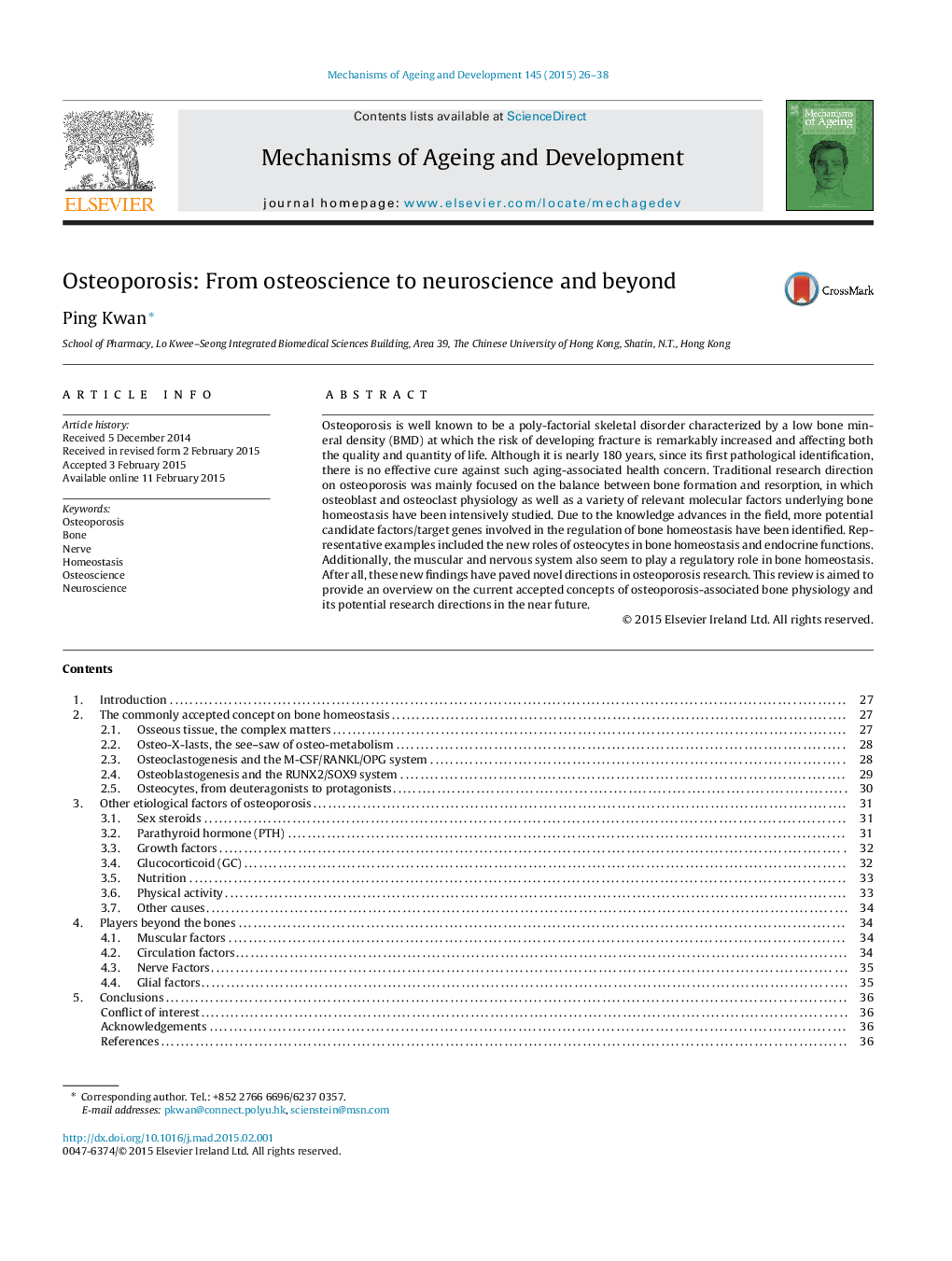| Article ID | Journal | Published Year | Pages | File Type |
|---|---|---|---|---|
| 1919193 | Mechanisms of Ageing and Development | 2015 | 13 Pages |
•An up-to-date overview on the concept of osteoporosis (mainly at cellular level) for researchers new to the area.•A comprehensive review on bone homeostasis.•Pathophysiological contributions from other tissues are discussed: muscles, nerves, glia, and circulations.•Neurological aging and disuse atrophy may be an important contributor to the complex etiology of osteoporosis.•In addition to the muscle cells and osteocytes, Schwann cells may also be another important research target.
Osteoporosis is well known to be a poly-factorial skeletal disorder characterized by a low bone mineral density (BMD) at which the risk of developing fracture is remarkably increased and affecting both the quality and quantity of life. Although it is nearly 180 years, since its first pathological identification, there is no effective cure against such aging-associated health concern. Traditional research direction on osteoporosis was mainly focused on the balance between bone formation and resorption, in which osteoblast and osteoclast physiology as well as a variety of relevant molecular factors underlying bone homeostasis have been intensively studied. Due to the knowledge advances in the field, more potential candidate factors/target genes involved in the regulation of bone homeostasis have been identified. Representative examples included the new roles of osteocytes in bone homeostasis and endocrine functions. Additionally, the muscular and nervous system also seem to play a regulatory role in bone homeostasis. After all, these new findings have paved novel directions in osteoporosis research. This review is aimed to provide an overview on the current accepted concepts of osteoporosis-associated bone physiology and its potential research directions in the near future.
